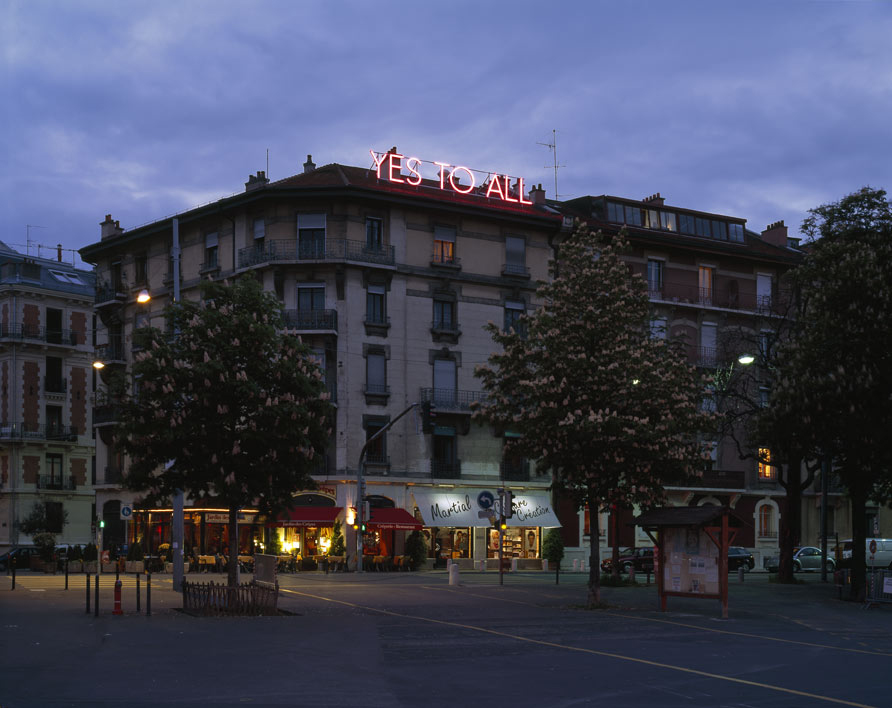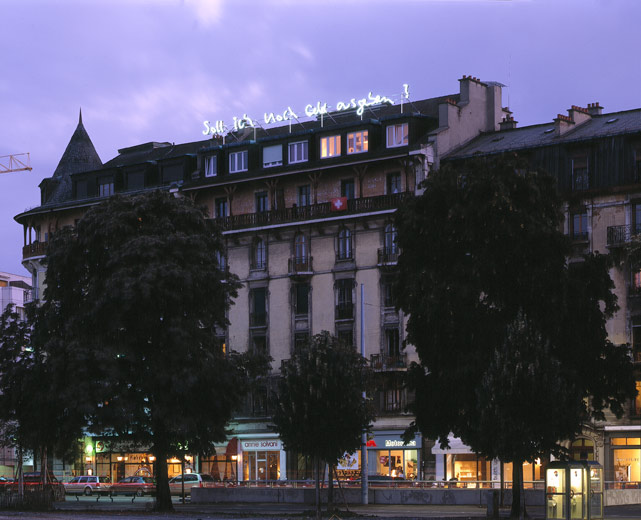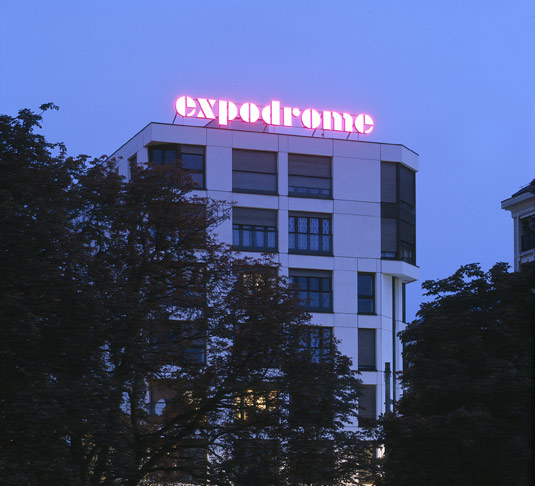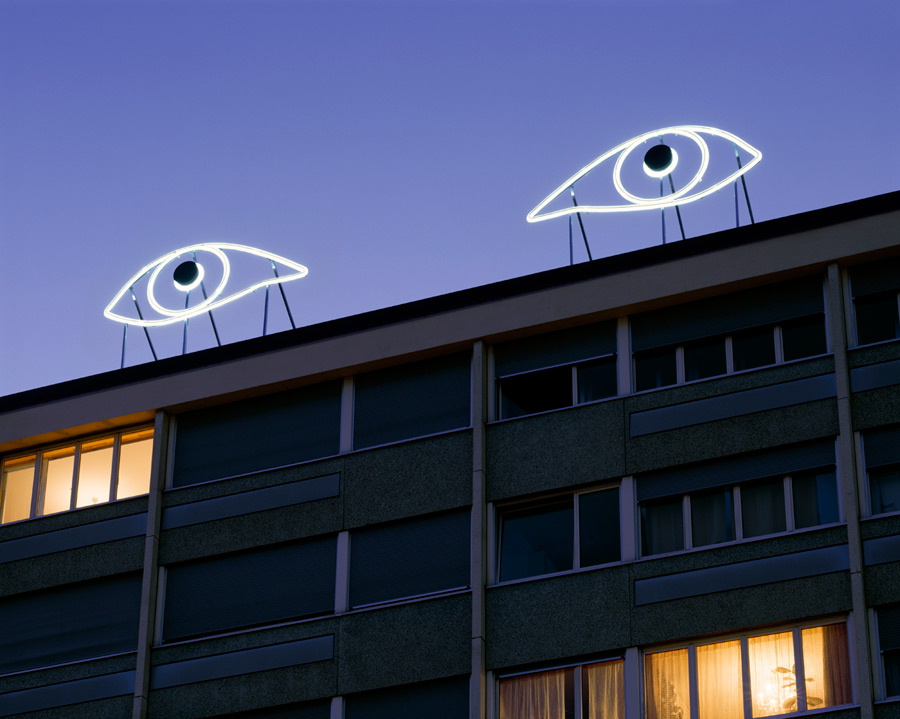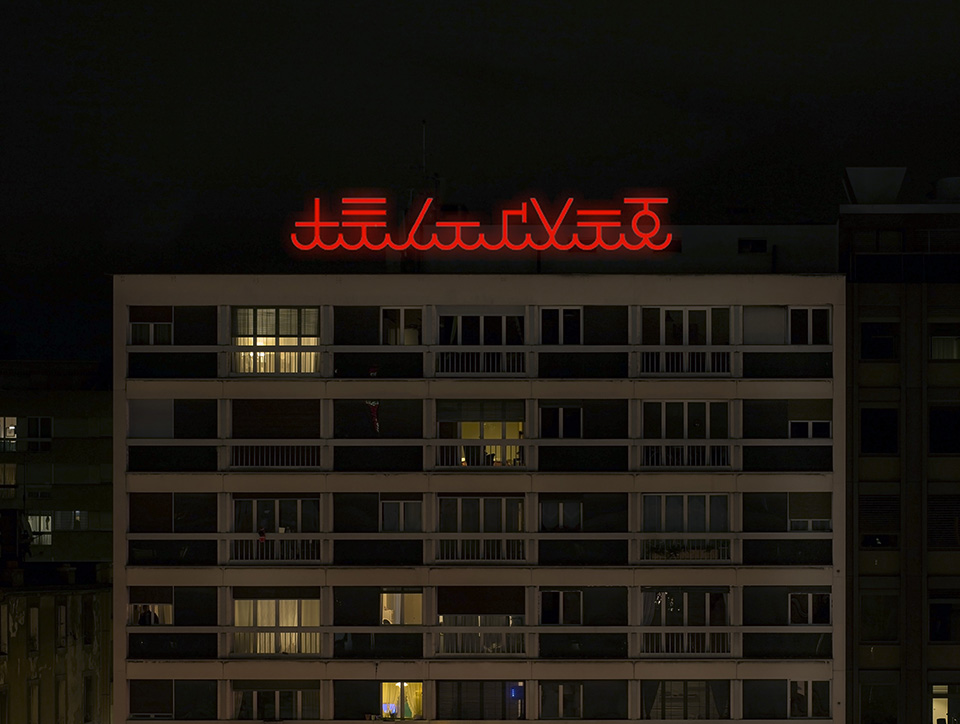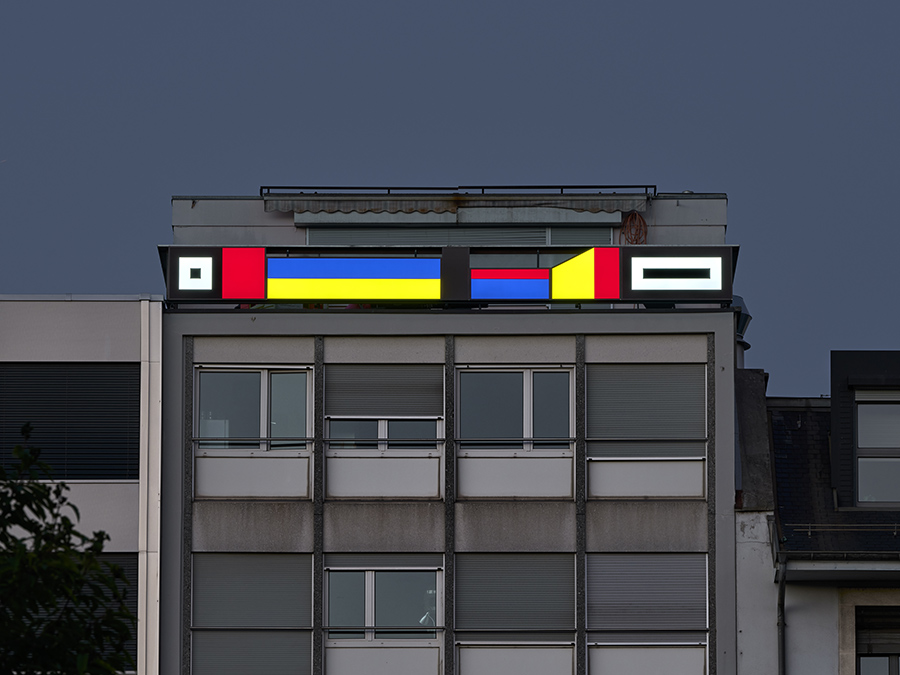
Neon Parallax, is an ambitious and singular public art project that, since 2006, has been led by the Municipal Fund for Contemporary Art (FMAC) and the Cantonal Fund for Contemporary Art (FCAC). The 4th phase launched in October 2012 with an exhibition and an international conference that looked back at the whole project. A 5th phase is launching in 2022.
Between the prestigious La Rade district at the end of the lake and the Plaine de Plainpalais, the parallax is based on the two areas’ similar diamond shape and the transposition of the advertising slogans of the signs that light up La Rade into illuminated art installations on the roofs of the buildings bordering the Plaine.
Designed specifically for the Plaine de Plainpalais in Geneva, Neon Parallax brings together eleven installations by Swiss and international artists: Sylvie Fleury (CH), Jérôme Leuba (CH) (work taken down), Christian Jankowski (D), Dominique Gonzalez-Foerster (F), Sislej Xhafa (Kosovo), Nic Hess (CH), Ann Veronica Janssens (B), Pierre Bismuth (F), Christian Robert-Tissot (CH), Nathalie Du Pasquier (F) and Olaf Nicolai (D). Read more...
Stakes of the project
The challenge of the artists invited to take part in this contest of international significance was to transpose the advertising stakes of the commercial signs of the harbour in artistic messages. The works have been placed on the roofs since 2007. Thanks to the generosity of the owners of the buildings, each roof is left at the disposal of the Funds to accommodate a creation for a period limited to ten years.
Luminous works on the roofs
Neon Parallax realizes several objectives of the Contemporary Art Funds of the City and Canton. On the one hand it aims at trying different temporality using artistic creations placed in public space for a limited period. On the other hand the occupation of the roofs round the Plaine allows a new context for the integration of the works to be explored, without occupying a space on the ground already overloaded and, in the particular case of the Plaine, already largely invested. The collective form of this global realisation made up of several individual works makes it possible to connect artists of the local scene with international creators. This step also makes it possible to regard the urban environment as a common space that can be questioned and upgraded by a new look.
Works
YES TO ALL
Sylvie Fleury, 2007
2 rue Patru/angle avenue du Mail
The use of slogans is a recurring practice in Sylvie Fleury’s work. They are often borrowed, such as ready-made phrases, to the world of fashion and design ; the transposition of their context renews and enriches the interpretation we make of them. The concept suggested here by the artist, YES TO ALL, already exists in her work in different versions: exhibition title, installations made out of crystals on mirrors or neon, etc.
The work integrates easily with the building by the judicious choice of the typography and the liveliness of the colour; the project is appealing thanks to the optimism and universality transmitted by its message.
Sylvie Fleury, CH, *1961, lives and works in Geneva.
Breath
Jérôme Leuba, 2007 (removed in July 2017)
2 avenue du Mail
Breath is a 24 meters length single luminous tube which diffuses a uniform halo of white light (by definition, the sum of all the colors) and which looks to be suspended in space. The formal purity of the project refers to the modernistic structure of the building of which it underlines the originality, but without artifice.
With Breath, the artist plays with the flux of light whose intensity decreases until it becomes almost invisible, then increases again until it reaches again its maximum intensity again. The light in impulse appears in perpetual movement, like breathing, and thus seems to give life to the building.
Jérôme Leuba, CH, *1970, lives and works in Geneva.
Note: this work of art had to be removed in July 2017, for safety reasons, due to the limited lifespan (ten years) of it’s materials.
What I Still Have To Take Care Of
Christian Jankowski, 2008
20 avenue du Mail
This project is inspired by the "memoranda" that the artist writes and which include questions he must ask his gallerist, his assistants, his students, and even his accountant. These lists pile up, multiply on his desk and turn into a kind of newspaper of personal, chaotic, sometimes humorous notes that divert him from the artistic work on which he should concentrate. Thus he had the idea to use this material as a support for an artistic project. For Neon Parallax, the artist presents a sentence, a question, resulting from these numerous lists. The question: Soll ich noch Geld ausgeben? functions as social response to the many signs with commercial goal which are placed on the roads. The relevance and the universality of the message give a personal, daily and social question at the heart of the advertising and consumerist world. In spite of the language used by the artist (Christian Jankowski is German), the manual penmanship of the neon reinforces its accessibility. Beyond the plastic qualities of the proposal, one also recognizes the generosity and the empathy which characterise the work of the artist.
Christian Jankowski, DE, *1968, lives and works between Berlin and New York.
Expodrome
Dominique Gonzalez-Foerster, 2008
11 avenue du Mail
The neon installation Expodrome spells out the title in LED letters whose typography allows for four possibilities of individual or fragmentary lighting, i.e., orange, white, pink or simply unlit. The complete word appears every hour for one minute. The rest of the time the sign seems to dysfonction; it goes through all kinds of disorders until it becomes completely illegible: it will show parts of the word, like "rom", or a letter "x" or abstract signs. The rhythm of the dysfunctions can be used as a reference mark: for example, "x" will always appear at the same time. This work operates like a secret clock, but it is also in total opposition to the "supposed perfection" of the advertising signs that surround the edge of Geneva lakefront. Expodrome is the title of the exhibition of the artist opened in 2007 at the ARC (Paris) and which will travel under the same name all over the world. This word refers to the exhibition but also suggests the existence of a place, in the City, devoted to the concept of the exhibition.
One of the main attractions of the project resides in its various degrees of reading: the secret clock, the ludic side of the signs from the letter itself to the fragment of word and the abstracted sign, the cheerfulness of the colours, the reference to the site of the exhibition, etc.
Dominique Gonzalez-Foerster, FR, *1965, lives between Paris and Rio de Janeiro.
Axis of silence
Sislej Xhafa, 2009
14B avenue du Mail
The artist's proposal consists of the installation of two large eyes, drawn on a white thermo painted metal sheet, on the flat roof of the building. The linear design will be clearly visible by day, and by night it will be complemented by a halo of black neon lighting. The topic was chosen for its universality and because the eyes are the part of the body through which we best communicate. The simplified, yet subtle design will allow the general public to clearly identify the installation. This will be the first figurative element installed on a roof on the Plaine de Plainpalais, and the first production of this technique. The whole work conveys a stimulating breakdown in scale and an intriguing dreamlike appearance.
Sislej Xhafa, Kosovo, *1970, lives and works in New York.
Fly A Dragon Kite
Nic Hess, 2009
6 avenue Henri-Dunant
The installation designed by Nic Hess for Neon Parallax juxtaposes diamond-shaped light boxes and forming the silhouette of a kite. The diamond-shapes are inspired by the shape of the Plaine de Plainpalais. The luminous caissons will be illuminated by LEDs, with the colours varying according to a weekly rhythm, 52 times a year. As well as being representative, decorative and abstract, the artist's proposal is characterised by its playfulness, its apparent simplicity and dynamism.
Nic Hess, CH, *1968, lives and works between Zurich and London.
L'ODRRE N'A PAS D'IPMROTNCAE
Ann Veronica Janssens, 2012
9 avenue Henri-Dunant
The Belgian artist, known in particular for her lighting installations in which coloured fogs dissolve shapes and contours, explores the limits of perception, extending the physical and mental experience of the spectator. For Neon Parallax, she takes up a fragment of text that she found on a small poster on the very site of Plainpalais. This portrayed a scientific analysis carried out by Cambridge University, according to which the order of letters in a word is not vital to its readability provided that the first and last letters are in the right place. The text featured here in white capitals, L'ODRRE N'A PAS D'IPMROTNCAE, gives rise to a perception in several dimensions, triggering a reflex in reading that leads, through the automatic ordering of letters, to overall comprehension; the work elicits reflection that goes beyond the first look, raises questions on its different possible senses, from the concrete visual to the epistemological, from the artistic to the political.
Ann Veronica Janssens, BE, *1956, lives and works in Brussels.
Coming Soon!
Pierre Bismuth, 2012
4 avenue Henri-Dunant
The French artist juxtaposes and blends the senses proper to various fields of social activity - commercial, entertainment, political, artistic – revealing and questioning their frontiers through successive shifts. The lighting installation proposed for Plainpalais comprises the text Coming Soon! in blue neon. This text takes up the standard line used for trailers of upcoming films; these tasty invitations are often more convincing than the films themselves, as their elusive and fragmented character allows one to clothe them with one’s own desires and imagination. Abandoning the context of the cinema to confront the public arena, the planned work plays on the desire and expectation of the spectator in an even more open and indefinite manner, denouncing perhaps the hollow promises of advertising, but at the same time leaving to each and everyone the choice of his own object of desire; it embodies this ideal space for projection and the individual freedom of imagination.
Pierre Bismuth, FR, *1963, lives and works in Brussels.
DIMANCHE
Christian Robert-Tissot, 2012
37 boulevard Georges-Favon
Language is Christian Robert-Tissot’s work material of choice. The Swiss based artist is known for his diverted texts and catchphrases. He has been working on various supports for numbers of years: billboards, neon signs, canvas. Whether independent volumes or fixed on a wall, these works interpellate and question those who look at them. His statements appear as a sort of interface, connecting their significance, size, form, their font and the environment for which they’re conceived. These «picture/words» therefore find themselves in a close relation with their environment, whether architectural or cultural.
For Neon Parallax, the artist offers to place the word DIMANCHE («dimanche» is the french word for «Sunday») in capital letters on the roof of the sponsoring bank. Since it is written in capital letters, the word appears as an invitation to resting or taking a day off and also as a blank space in an agenda, free of any activity. This while remaining in complete shift regarding the concept of catchphrase and advertising.
Christian Robert-Tissot, CH, *1960, lives and works in Geneva.
«ALDEZBF?» SUBLIME IMAGINATION
Olaf Nicolai, 2022
20 avenue Henri-Dunant
To the contexts in which they take place, Olaf Nicolai’s works respond with cultural, (socio)political or architectural links. Conceptual in nature, they are infused with numerous scientific and literary references, and analyse perception processes to thwart the appearance and obviousness of things.
The mysterious message “ALDEZBF”, at once mystical and graphical, appeals to the collective imagination. It is supposed to come from planet Mars, transcribed by the pen of medium Hélène Smith and taken from a study published in 1900 by Genevan psychologist Théodore Flournoy, based on an assessment by linguist Ferdinand de Saussure. Observing Hélène Smith’s surreal trances enabled him to analyse the workings of the “subconscious creative imagination”, which broadly expressed itself as a source of aesthetic production. Eight characters adapted from an alphabet that was itself interpreted on the basis of the medium’s handwritten characters make up an untranslatable word whose meaning can only be guessed. The sign becomes an ornamental motif open to stylistic interpretations. Its colours change from red to blue, marking the distance between Earth and Mars, that is to say a slow gradation over a period of several years, confirming the term “red planet” (or the illusion of this) when it is closest.
Olaf Nicolai, D, *1962, lives and works in Berlin.
Untitled
Nathalie Du Pasquier, 2022
14 avenue Henri-Dunant
Originally a designer, Nathalie Du Pasquier has been focusing on painting since the late 1980s. Her works reflect her interest in spatial relations between objects and their environment, in a coloured geometric stylisation that evolved towards increasingly abstract minimal compositions.
Her joyful approach to abstraction, without formalism, is quite apparent in her sign. As is often the case in the artist’s practice, the painting extends beyond its frame and spreads into real space, placing itself between two- and three-dimensionality. The composition, produced by several illuminated crates, responds to the architectural environment through a play of full and empty spaces, as well as varying heights and other elements evoking the recesses and projections of buildings. Furthermore, the right-hand diagonal, recalling the classical perspective, produces a depth effect through the illusion that the adjoining part is sunken. The whole sign crowns the facade of the building, which playfully serves as its plinth, evoking components of a construction game.
Visible both day and night, the composition’s bright colours give it a very pictorial appearance, bringing a new aesthetic parameter to the set of illuminated signs already set up around the Plaine. Nathalie Du Pasquier, F, 1957, lives and works in Milan
Partners
This project of artistic revalorisation could not have been realised without the support of private partners, namely the owners of the buildings.
This particular patronage puts at the disposal of the City and of the Canton, for a period of several years, the space for the art works on the roofs. Read more...
Private partners
- Agence immobilière Alain Bordier & Cie SA, Genève
- Association Caritas Cité Joie, Genève
- Association Saint-Boniface, Genève Bory & Cie
- Agence Immobilière SA, Genève
- Centre universitaire protestant, Genève
- Equalis SA, Genève
- Lombard Odier & Cie, Genève
- Pilet & Renaud SA, Genève
- Rentes Genevoises, Genève
- Université de Genève
- Investis SA, Crans-Montana
- Hôpitaux Universitaires de Genève
- Vimi-Néon Champendal Sàrl, Genève
In collaboration with
- Office cantonal de l’urbanisme (Département du territoire)
- Office cantonal du patrimoine et des sites (Département du territoire)
- Service cantonal de la culture / Office cantonal de la culture et du sport (Département de la cohésion sociale)
- Service culturel de la Ville de Genève (Département de la culture et de la transition numérique)
- Département de l’aménagement, des constructions et de la mobilité de la Ville de Genève
Contact / Information
Fonds municipal d'art contemporain (Fmac)
Chemin du 23-Août 5, 1205 Genève
T +41 (0)22 418 45 30
fmac@ville-ge.ch
FMAC website

Fonds cantonal d'art contemporain (FCAC)
Chemin de Conches 4, 1231 Conches
T +41 (0)22 546 63 80
fcac@etat.ge.ch
www.fcac.ch
Espace presse
- Press release 2012 (pdf 34 ko)
- Press kit 2012 (french, pdf 166 ko)
- Press kit 2022 (french, pdf 700 ko)
- Press photos 2022 (zip 290 mo)
Multimedia and social network
www.neons.ch is the official site of the NEONS project ordered, organized and piloted by the Contemporary Art Fund of the City of Geneva (FMAC), Departement of culture of the City of Geneva, and by the Contemporary Art Fund of the Canton of Geneva (FCAC), Department of social cohesion of the Republic and Canton of Geneva.
All rights reserved for all countries, for all the texts and all the illustrations, photographs, extracts from video, film, maps, charts and all the documents presented on this site. Any use, for whatever reason, of the texts, documents, photographs and information presented, even if it is only a partial use of this information, can be made only with the preliminary and written authorization of the author of the documents concerned, and the owner of the rights or any other duly authorized person for this purpose.
Are regarded as a use: filing, transmission or reproduction of whole or part of information, in whatever form — printed, virtual, file data processing —, whatever support, or any other use of the information presented.




